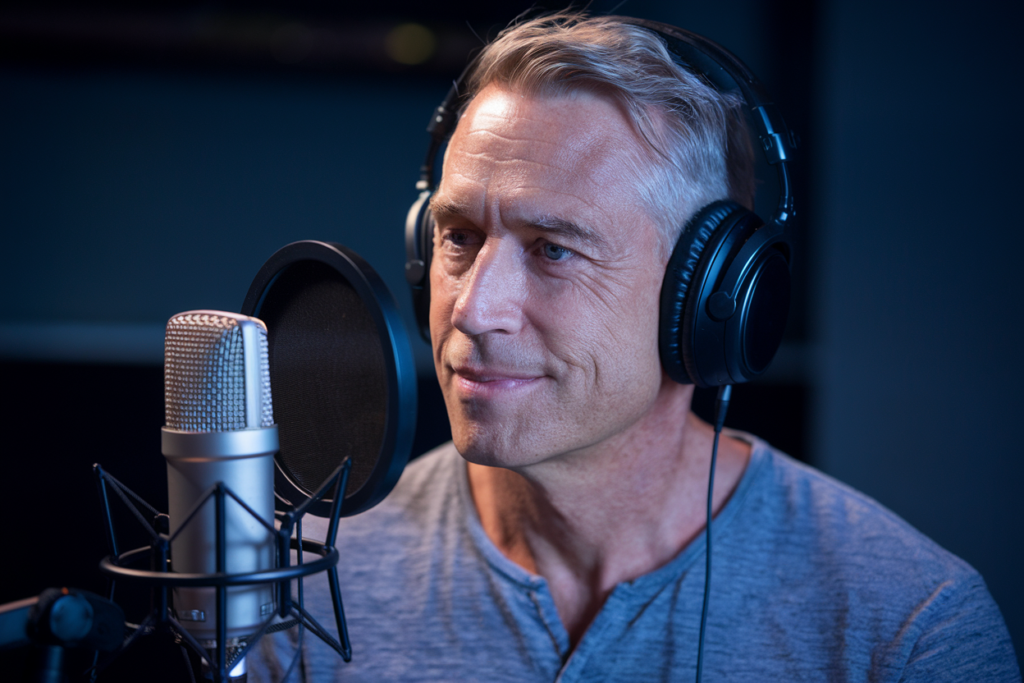Dubbing videos in American English can be a game-changer for reaching wider audiences. Whether you’re localizing content or creating original voiceovers, mastering the art of dubbing is essential to ensure your message resonates. With its unique nuances and cultural references, American English offers distinct challenges that can make or break your project.
Key Takeaways
- Understanding Video Dubbing: Video dubbing replaces original audio with new voiceovers, requiring skilled talent to convey tone and emotion effectively.
- Importance of Cultural Relevance: Effective dubbing enhances audience engagement by adapting content to resonate with diverse viewers while preserving the original message.
- Mastering Techniques: Focus on capturing the right tone and emotion, along with precise synchronization of audio and lip movements for a realistic viewing experience.
- Selecting Voice Talent: Choose voice actors based on vocal quality, emotional range, experience, and ability to convey regional accents within American English for authenticity.
- Effective Directing: Clear communication during recording sessions ensures that voice actors deliver performances that align with both visual elements and emotional undertones.
- Quality Recording & Editing: Utilize high-quality equipment and effective editing techniques to refine recordings, ensuring polished voiceovers that captivate audiences.
Understanding Video Dubbing
Video dubbing involves the process of replacing the original audio in a video with new audio, typically in a different language or dialect. This technique often requires skilled voice talent to accurately convey the content’s tone and emotion.
What Is Video Dubbing?
Video dubbing refers to synchronizing spoken dialogue with visual elements in a video. It entails recording new voiceovers that match character lip movements and emotional expressions. Successful dubbing relies on both technical precision and artistic interpretation by talented voice actors, ensuring that viewers receive an authentic experience.
Importance of Dubbing in Media
Dubbing plays a vital role in media localization, allowing content to resonate with diverse audiences. Effective dubbing enhances viewer engagement through culturally relevant adaptations while maintaining the original message. By employing proficient voice artists who understand nuances of American English, you ensure that your media reaches broader demographics without losing impact or authenticity.
American English Dubbing Techniques
Mastering American English dubbing techniques is essential for delivering engaging and culturally relevant content. Focus on two key aspects: tone and emotion, along with synchronization with lip movements.
Tone and Emotion
Capturing the right tone and emotion in voiceovers enhances viewer connection. Ensure that your voice artist delivers lines with the appropriate emotional weight, matching the original intent of the dialogue. Utilize variations in pitch, volume, and pacing to convey feelings effectively. For instance, a light-hearted scene may require a playful tone, while dramatic moments demand a more serious delivery. It’s vital for voice actors to interpret character nuances accurately, allowing audiences to experience authentic emotions throughout the video.
Synchronization with Lip Movements
Achieving perfect synchronization between audio and visual elements is crucial in dubbing. Voiceovers must align seamlessly with character lip movements for realism. This involves careful timing during recording sessions; voice talent should practice their lines while observing the visuals to match speech patterns accurately. Using advanced editing software can further refine synchronization by adjusting audio tracks as needed. Prioritize this technique to maintain immersion for viewers while ensuring that spoken words flow naturally within each scene’s context.
Choosing the Right Voice Talent
Selecting the right voice talent is essential for achieving effective American English video dubbing. The right voice actor brings your project to life, ensuring that the delivered message resonates with your target audience.
Criteria for Selecting Voice Actors
- Vocal Quality: Assess the clarity, tone, and overall quality of a potential voice artist’s voice. A clean and engaging vocal quality enhances viewer retention.
- Accent and Dialect: Consider whether the voice actor can effectively capture regional accents or specific dialects within American English to align with your project’s needs.
- Experience: Evaluate the candidate’s experience in similar projects. A seasoned voice over talent understands nuances that can elevate your video’s impact.
- Emotional Range: Determine if the voice artist can convey various emotions convincingly. An adept performer will connect with viewers through appropriate emotional delivery.
- Availability: Confirm that the selected talent has availability that aligns with your project timeline, ensuring timely completion without compromising quality.
The Role of Directing in Dubbing
Directing plays a critical role in guiding voice actors during recording sessions to achieve desired outcomes. Effective direction ensures that each line matches both visual elements and emotional undertones present in the original content.
- Clear Instructions: Provide specific guidance on tone, pacing, and emotion to help voice over actors deliver lines accurately.
- Feedback Loop: Establish an ongoing feedback process during recording sessions to refine performances based on immediate results.
- Collaboration: Foster a collaborative environment where input from both directors and artists leads to optimal interpretations of scripts.
By focusing on these criteria when choosing voice talent and employing effective directing techniques, you create compelling American English dubbing that captivates audiences and maintains authenticity throughout your media project.
Recording and Editing Process
The recording and editing process plays a crucial role in creating high-quality American English voiceovers. Proper execution ensures that the final product resonates with audiences while maintaining authenticity.
Equipment Needed for Quality Dubbing
Choosing the right equipment enhances the quality of your dubbing projects. Essential tools include:
- Microphones: Use condenser microphones for clear, high-fidelity sound capture.
- Audio Interface: An audio interface connects your microphone to the computer, improving sound quality.
- Headphones: Closed-back headphones prevent audio bleed during recording sessions.
- Pop Filter: A pop filter reduces plosive sounds, ensuring smoother recordings.
- Digital Audio Workstation (DAW): Select DAWs like Pro Tools or Adobe Audition for efficient editing and mixing capabilities.
Investing in these tools helps achieve professional-grade voiceovers that engage viewers effectively.
Tips for Effective Editing
Editing is vital in refining voiceover recordings. Follow these tips for optimal results:
- Listen Carefully: Review each take meticulously to identify issues in tone or pacing.
- Use Noise Reduction Tools: Remove background noise to enhance clarity without compromising vocal quality.
- Sync Dialogue Precisely: Ensure that dialogue aligns with lip movements; this requires attention to timing during editing.
- Add Effects Sparingly: Employ effects like reverb or compression judiciously to maintain a natural sound while enhancing presence.
- Seek Feedback: Collaborate with peers or directors who can provide constructive criticism on performance and overall flow.
Implementing these strategies streamlines the dubbing process, resulting in polished voiceovers that captivate audiences.
Common Challenges in Dubbing
Dubbing in American English presents unique challenges that require a keen understanding of regional nuances and technical precision.
Handling Regional Accents
Handling regional accents is crucial for authenticity. Voice actors must adapt their performances to resonate with specific audiences. This involves not just mimicking accents but also capturing the cultural context behind them. Accurate representation ensures that dialogue feels natural and relatable, enhancing viewer engagement. When selecting voice talent, consider their proficiency in various American accents to match the project’s needs effectively.
Managing Timing and Pacing
Managing timing and pacing is essential for successful dubbing. Voiceovers must align perfectly with visual elements to maintain realism. This synchronization requires precise timing during recording sessions, ensuring lines fit within the original scene’s rhythm while conveying appropriate emotional weight. Voice artists should rehearse extensively to familiarize themselves with the material’s flow, allowing for adjustments that enhance overall coherence. Utilizing advanced editing software can further refine this process, helping create seamless transitions between audio and visuals while keeping audience immersion intact.
Conclusion
Mastering American English video dubbing can set your projects apart and engage a wider audience. By focusing on tone emotion and synchronization you’ll create voiceovers that resonate deeply with viewers. Selecting the right voice talent is just as crucial as ensuring high-quality recording and editing.
Stay aware of regional accents and cultural nuances to enhance authenticity in your dubbing. With practice and the right tools you can overcome common challenges and elevate your media content. Embrace these tips to transform your dubbing process into a compelling storytelling experience that captivates audiences everywhere.
Frequently Asked Questions
What is video dubbing?
Video dubbing involves replacing the original audio of a video with new audio, typically in a different language or dialect. This process requires skilled voice talent to convey the content’s tone and emotion accurately while ensuring synchronization between dialogue and visual elements.
Why is dubbing important for American English?
Dubbing in American English helps reach broader audiences by localizing content effectively. It ensures that cultural references and nuances resonate with viewers, enhancing engagement while maintaining the original message’s impact.
How do you choose the right voice talent for dubbing?
Selecting the right voice talent involves assessing vocal quality, accent proficiency, emotional range, experience, and availability. Voice actors should understand American English nuances to deliver authentic performances that connect with diverse audiences.
What are key techniques in American English dubbing?
Key techniques include capturing appropriate tone and emotion during voiceovers and achieving precise synchronization with lip movements. Skilled voice artists must balance emotional delivery while timing their dialogue to align seamlessly with visual cues.
What equipment is essential for high-quality dubbing?
Essential equipment includes condenser microphones, audio interfaces, closed-back headphones, pop filters, and digital audio workstations (DAWs) like Pro Tools or Adobe Audition. Investing in these tools ensures professional-grade recordings that engage viewers effectively.
What challenges exist when dubbing in American English?
Challenges include managing regional accents and ensuring proper timing and pacing during recordings. Voice actors must adapt performances to resonate culturally while synchronizing their lines accurately with visual elements for a natural flow.
How can editing improve the dubbing process?
Effective editing enhances dubbed videos by ensuring precise dialogue synchronization, reducing background noise, using effects sparingly, and seeking peer feedback. Careful listening during editing contributes to polished voiceovers that captivate audiences.
Why is directing important in video dubbing?
Directing plays a crucial role by providing clear instructions and feedback to voice actors. A collaborative approach between directors and performers leads to optimal performances that maintain authenticity throughout media projects.







